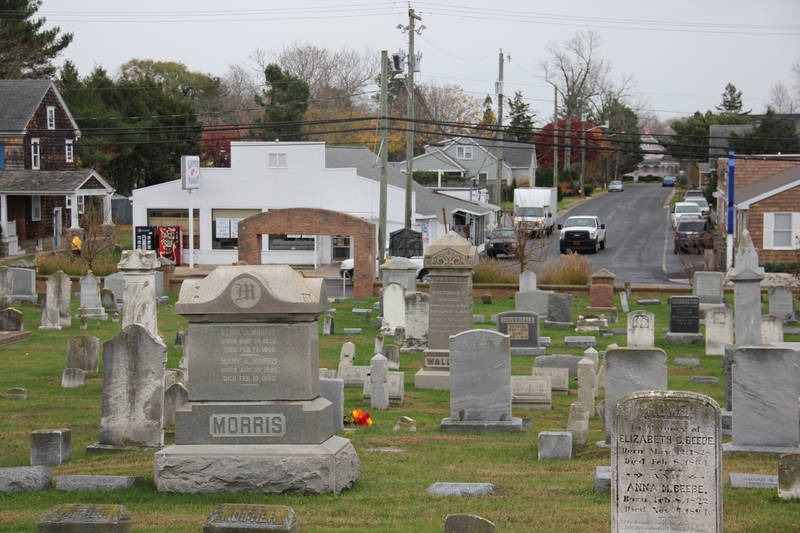Surveyors put Lewes on world’s scientific map in 1769

On a day late in May 1769, the mathematical capability of the populace of Lewes spiked. Three surveyor-scientists associated with Benjamin Franklin’s American Philosophical Society in Philadelphia disembarked from a sailing ship and made their way into the Colonial village known then as Lewestown.
They were likely met at their anchorage by a rowing skiff that carried them and their equipment into Lewes Creek where they climbed ashore via a stone wharf at the foot of Market Street. Gilligan’s Restaurant now stands by that old wharf. From there they could make their way to one of the inns of town, such as the Ryves Holt house, to get local bearings, satisfy their hunger and thirst, meet some of the town’s citizens and figure out where best to begin the celestial quest that brought them to town.
Spotting Lewes coming down Delaware River and Bay from Philadelphia that year would have been easier for the ship’s captain than ever before. It was in that same spring that the Cape Henlopen Lighthouse, built by the British at the urging of Philadelphia merchants tired of losing ships on the shoals at the mouth of the Delaware, first went into service. Its commanding height atop a tall dune at Cape Henlopen would have been visible up the Delaware for miles and miles.
The Philadelphia surveyors had the new lighthouse in mind as they plotted the strategy of their Lewes adventure. But that wasn’t the primary reason for their trip.
Within just a few days of their arrival, they and other astronomers around the world would be peering through telescopes to observe the planet Venus crossing the face of the sun.
An astronomical phenomenon that comes along every 120 years or so, the socalled Transit of Venus, at that point in history, held the key to what Rehoboth Beach resident and author James Morrison has called the Holy Grail of Astronomy between the 17th and 19th centuries: the size of our solar system. By timing the passage of Venus across the sun from multiple locations around the planet, scientists would be able to use known mathematical principles to measure the distance between the Earth and the sun. Knowing that distance, they could plot the size of the entire solar system.
Over the next several days, the visitors from Philadelphia set up their temporary Lewes observatory for the June 3 event. Because the value of timing the Transit of Venus depended on knowing the precise latitude and longitude of each observatory, the men also had to determine those numbers. Using surveying equipment including a 66-foot-long chain, the men assembled a crew to accurately measure the distance between their temporary observatory in Lewes and an established geographical location. They were few and far between in Delaware at the time, but the Transpeninsular Line surveyed in 1751 to establish the southern boundary of Delaware did the trick. Chain length by chain length, the crew worked its way south from Lewes on established roads until a few days and 21.93 miles later as the crow flies, the crew reached Transpeninsular Line mile marker No. 9 near present-day Selbyville. The calculations helped establish latitude for the Lewes observatory. A set of more complicated calculations, again with the assistance of chain-toting surveyors working from the Philadelphia end, allowed American Philosophical Society members to accurately place the longitude of the Lewes site.
Using a lot of those same numbers and techniques, the American teams were able to not only contribute to establishing the distance of the Earth from the sun at about 95 million miles, but they were also able to pinpoint the latitude and longitude of the new Cape Henlopen Lighthouse, which considerably aided navigation in the mid-Atlantic. Morrison and Jeffrey Thurston - a colleague in England - performed an extensive study to determine the location of the temporary Lewes Observatory. Their investigation led them to place that location inside the Bethel Methodist Cemetery on Savannah Road. State and local officials - including Morrison - were scheduled to dedicate an historical marker at the cemetery on Nov. 20 to commemorate Lewes’s role in an important chapter in global astronomical history.
In a short piece presented to Sen. Ernie Lopez as potential language for the marker, Morrison concluded by writing: “The 1769 transit thrust Lewes and the American observation teams into world-class science and confirmed their ability to perform at the level of European astronomers.”
Not bad for a salt-soaked, marshy little Colonial town along the coast.






















































